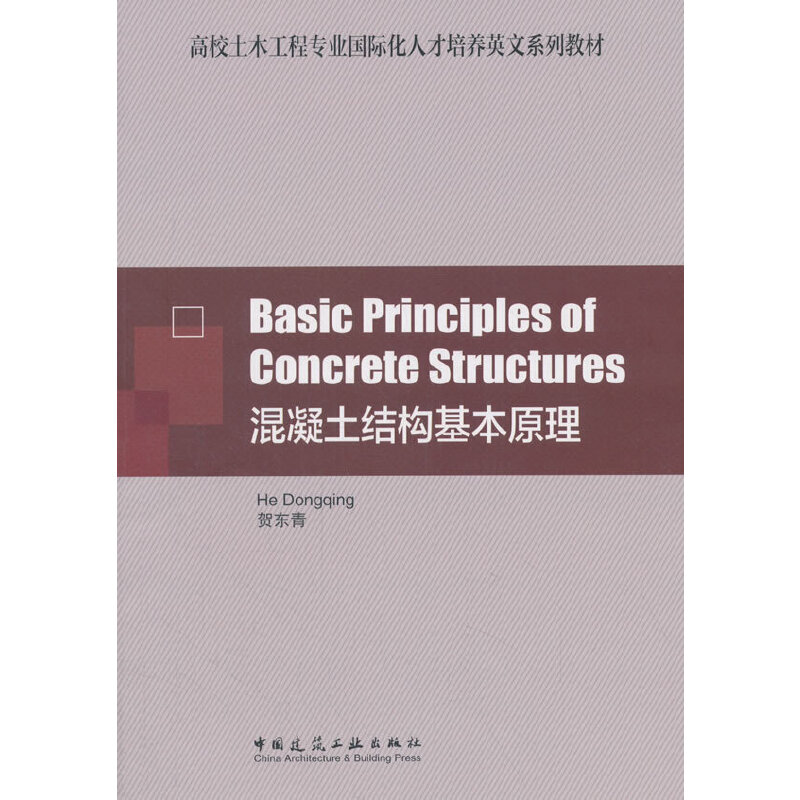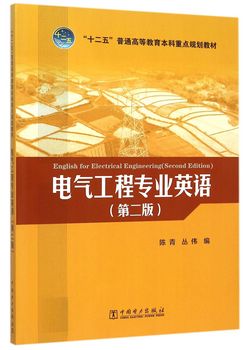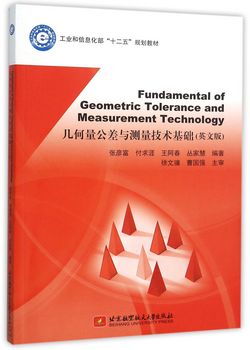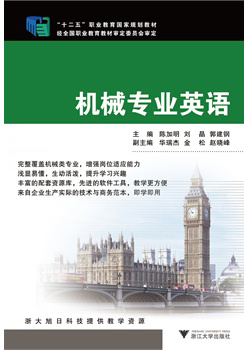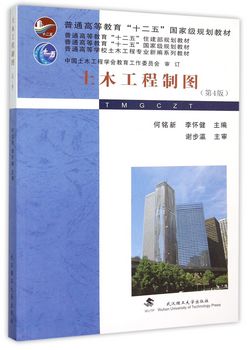混凝土结构基本原理 / 高校土木工程专业国际化人才培养英文系列教材
定价:¥48.00
作者: 贺东青
出版时间:2018-04
最新印次日期:2018-8
出版社:中国建筑工业出版社
- 中国建筑工业出版社
- 9787112216482
- 1版
- 206195
- 60264882-6
- 平膜
- 16开
- 2018-04
- 426
- 284
- 工学
- 土木类
- TU37
- 土木工程
- 本科
内容简介
本书系统地介绍了钢筋混凝土材料的力学性质和对承受弯矩、剪力、压力、拉力和扭矩作用下构件的设计方法,提供了很多实际应用算例以供学习,同时介绍了预应力混凝土构件的概念和方法。
本书可作为高校土木工程专业和其相关专业的教学用书,也可用于相关专业工程技术人员的参考用书。同时希望,通过本书可以增强读者对专业英语的学习兴趣和能力。
本书可作为高校土木工程专业和其相关专业的教学用书,也可用于相关专业工程技术人员的参考用书。同时希望,通过本书可以增强读者对专业英语的学习兴趣和能力。
目录
Chapter 1 Introduction
1.1 General Concepts of Concrete Structures
1.1.1 Definition and Classification of Concrete Structures
1.1.2 Function and Demand of Reinforcement
1.1.3 Advantages and Disadvantages of Concrete Structures
1.2 Historical Development of Concrete Structures
1.3 Function and Limit State of Structures
1.3.1 Function of Structures
1.3.2 Limit State of Structures
1.3.3 Load and Material Strength
1.4 Characteristics of Course and Learning Methods
Questions
Chapter 2 Mechanical Properties of Concrete and Steel Reinforcement
2.1 Mechanical Properties of Concrete
2.1.1 Strength of Concrete Under Uniaxial Stress State
2.1.2 Strength of Concrete Under Multiaxial Stresses
2.1.3 Deformation of Concrete
2.1.4 Fatigue Performance of Concrete
2.2 Mechanical Properties of Steel Bars
2.2.1 Type of Steel Bars
2.2.2 Domestic Ordinary Steel Bars
2.2.3 Strength and Deformation of Steel Bars
2.2.4 Constitutive Model of Steel Bars
2.2.5 Fatigue Failure of Steel Bars
2.2.6 Reinforcement Properties for Reinforced Concrete Structures ~
2.3 Bonding Between Steel Bars and Concrete
2.3.1 Importance of Bonding
2.3.2 Components of Bonding Strength
2.3.3 Bond Stress-Slip Relationship
2.3.4 Anchorage of Steel Bars
Questions
Chapter 3 Load-Carrying Capacity on Normal Section for Flexural Members
3.1 General Structure of Beams and Slabs
3.2 The Flexural Property of Normal Section for Flexural Members
3.2.1 Three Typical Stages for Beams with Under-Reinforced Beam
3.2.2 Failure Modes
3.2.3 Balanced Failure and Balanced Reinforcement Ratio
3.3 Calculation Principles for Load-Carrying Capacity of Normal Sections
3.3.1 Basic Assumption
3.3.2 Equivalent Rectangular Stress Block
3.3.3 Critical Reinforcement Ratio
3.3.4 Minimum Reinforcement Ratio
3.4 Load-Carrying Capacity of Normal Section for Flexural Members with Singly
Reinforced Rectangular Sections
3.4.1 Basic Formulae and Applicable Conditions
3.4.2 Application of Formulae
3.4.3 Calculation Coefficient and Calculation Method on Bearing Capacity of Normal Section
3.5 Load-Carrying Capacity of Normal Section for Flexural Members with Doubly Reinforced Rectangular Sections
3.5.1 Introduction
3.5.2 Basic Formulae and Applicable Conditions
3.5.3 Application of Formulae
3.6 Load-Carrying Capacity of Normal Section for Flexural Members with T-Sections
3.6.1 Introduction
3.6.2 Design Formulas and Applicable Conditions
3.6.3 Application of Formulae
Questions
Exercises
Chapter 4 Load-Carrying Capacity of Oblique Section for Flexural Members
4.1 Introduction
4.2 Inclined Crack, Shear-Span Ratio and Failure Modes of Inclined Sections under Shear Force
4.2.1 Web-Shear Inclined Crack and Flexure-Shear Inclined Crack
4.2.2 Shear-Span Ratio (A)
4.2.3 Failure Modes of the Oblique Section
4.3 Mechanism of Shear Resistance for Beams without Web Reinforcement
4.4 Calculation of Load-Carrying Capacity on Oblique Section
……
Charter 5 Sectional Load-Carrying Capacity for Compression Members
Chapter 6 Load-Carrying Capacity for Tension Members
Chapter 7 Load-Carrying Capacity of Torsional Members
Chapter 8 Deflection, Crack and Durability
Chapter 9 Prestressed Concrete Members
Appendix 1 Indexes of Mechanical Properties of Materials as Specified in Code for Design of Concrete Structures GB 50010——2010
Appendix 2 The Nominal Diameter, Nominal Cross-Sectional Area and Theoretical Weight of Nominal Steels
Appendix 3 Environmental Categories of Concrete Structures
References
1.1 General Concepts of Concrete Structures
1.1.1 Definition and Classification of Concrete Structures
1.1.2 Function and Demand of Reinforcement
1.1.3 Advantages and Disadvantages of Concrete Structures
1.2 Historical Development of Concrete Structures
1.3 Function and Limit State of Structures
1.3.1 Function of Structures
1.3.2 Limit State of Structures
1.3.3 Load and Material Strength
1.4 Characteristics of Course and Learning Methods
Questions
Chapter 2 Mechanical Properties of Concrete and Steel Reinforcement
2.1 Mechanical Properties of Concrete
2.1.1 Strength of Concrete Under Uniaxial Stress State
2.1.2 Strength of Concrete Under Multiaxial Stresses
2.1.3 Deformation of Concrete
2.1.4 Fatigue Performance of Concrete
2.2 Mechanical Properties of Steel Bars
2.2.1 Type of Steel Bars
2.2.2 Domestic Ordinary Steel Bars
2.2.3 Strength and Deformation of Steel Bars
2.2.4 Constitutive Model of Steel Bars
2.2.5 Fatigue Failure of Steel Bars
2.2.6 Reinforcement Properties for Reinforced Concrete Structures ~
2.3 Bonding Between Steel Bars and Concrete
2.3.1 Importance of Bonding
2.3.2 Components of Bonding Strength
2.3.3 Bond Stress-Slip Relationship
2.3.4 Anchorage of Steel Bars
Questions
Chapter 3 Load-Carrying Capacity on Normal Section for Flexural Members
3.1 General Structure of Beams and Slabs
3.2 The Flexural Property of Normal Section for Flexural Members
3.2.1 Three Typical Stages for Beams with Under-Reinforced Beam
3.2.2 Failure Modes
3.2.3 Balanced Failure and Balanced Reinforcement Ratio
3.3 Calculation Principles for Load-Carrying Capacity of Normal Sections
3.3.1 Basic Assumption
3.3.2 Equivalent Rectangular Stress Block
3.3.3 Critical Reinforcement Ratio
3.3.4 Minimum Reinforcement Ratio
3.4 Load-Carrying Capacity of Normal Section for Flexural Members with Singly
Reinforced Rectangular Sections
3.4.1 Basic Formulae and Applicable Conditions
3.4.2 Application of Formulae
3.4.3 Calculation Coefficient and Calculation Method on Bearing Capacity of Normal Section
3.5 Load-Carrying Capacity of Normal Section for Flexural Members with Doubly Reinforced Rectangular Sections
3.5.1 Introduction
3.5.2 Basic Formulae and Applicable Conditions
3.5.3 Application of Formulae
3.6 Load-Carrying Capacity of Normal Section for Flexural Members with T-Sections
3.6.1 Introduction
3.6.2 Design Formulas and Applicable Conditions
3.6.3 Application of Formulae
Questions
Exercises
Chapter 4 Load-Carrying Capacity of Oblique Section for Flexural Members
4.1 Introduction
4.2 Inclined Crack, Shear-Span Ratio and Failure Modes of Inclined Sections under Shear Force
4.2.1 Web-Shear Inclined Crack and Flexure-Shear Inclined Crack
4.2.2 Shear-Span Ratio (A)
4.2.3 Failure Modes of the Oblique Section
4.3 Mechanism of Shear Resistance for Beams without Web Reinforcement
4.4 Calculation of Load-Carrying Capacity on Oblique Section
……
Charter 5 Sectional Load-Carrying Capacity for Compression Members
Chapter 6 Load-Carrying Capacity for Tension Members
Chapter 7 Load-Carrying Capacity of Torsional Members
Chapter 8 Deflection, Crack and Durability
Chapter 9 Prestressed Concrete Members
Appendix 1 Indexes of Mechanical Properties of Materials as Specified in Code for Design of Concrete Structures GB 50010——2010
Appendix 2 The Nominal Diameter, Nominal Cross-Sectional Area and Theoretical Weight of Nominal Steels
Appendix 3 Environmental Categories of Concrete Structures
References

